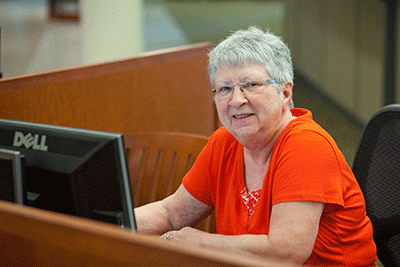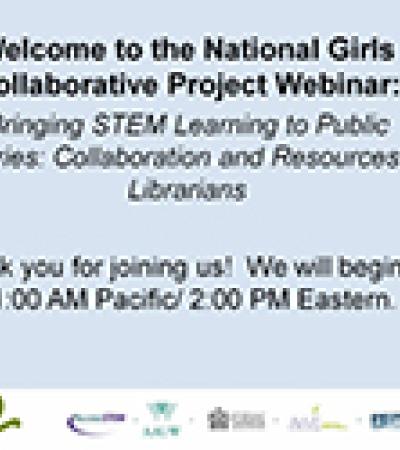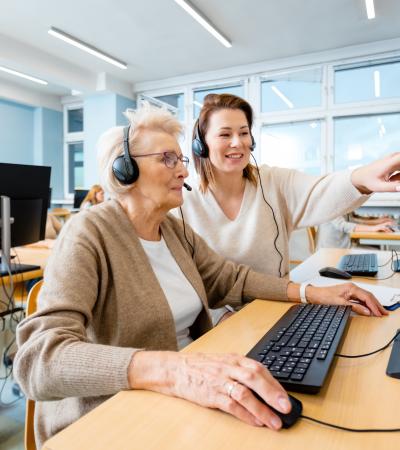
There’s no getting around it, computers touch nearly every facet of our lives. Need a job? Apply online. Need a resume? Fire up the word processing software and write one. Need to get in touch with someone? Email them. Want to see the latest pictures of your grandkids? Log on to Facebook.
But for some library patrons, it's not that easy. In a world where computer literacy is an ever-increasing requirement of daily life, not everyone knows how to navigate the landscape. Public libraries are often where the computer- and technology-challenged come when they need computer and online access, as well as answers to the most basic questions.
At Mid-Continent Public Library (MCPL), we’re making an effort to meet people where they’re at when it comes to technology. While we offer beginning and intermediate technology programs, our computer technology specialists have created a suite of classes that take a step back to help customers with few or no technology skills get a foothold and gain the confidence they need to comfortably use computers.
While a few branches in the MCPL system were consistently offering computer and technology programs, computer technology specialists Amanda Rhodes and Sara Wagner wanted to create a set of comprehensive technology programs for all 31 MCPL branches. Their first step was to talk to the people who assist patrons at the public computers all day long — the branch staff.
“We weren’t sure what we wanted to do, other than we knew we wanted to service our customers in the best way possible,” Rhodes said. “We asked the people working in the branches to tell us what kind of questions they were commonly answering.”
What came out of those conversations was a suite of back-to-basics technology programs with titles like Getting to Know Your Computer; Email for Beginners; Microsoft Word for Beginners; Internet Safety; Improving Your Mouse and Keyboarding Skills; and Filling Out a Job Application Online.
Each program is designed to alleviate the fear people have surrounding technology. The goal is to get them over the fear of losing everything or breaking something if they touch the keyboard and get them to the point where they feel confident enough to make technology work for them.
“If our programs can help people feel more in control of their devices,” Rhodes said, “I think we’ve done our job as computer technology specialists.”
The classes last between 60 and 90 minutes and are taught by either the technology specialists, who travel between the individual branches, or by branch staff. The classes are either hands-on or presentation style, depending on how the branches want it structured. The hands-on classes are limited to 10 to 15 participants. For the branches that don’t have computer labs, laptops are delivered a day or so before the program for patrons to use during the session. All the classes have a PowerPoint component. If facilitators choose to present the programs live with a computer and projector, they can disperse the slides to participants during the program.
“We try to make it comfortable for every teaching style, so that the customers get the best experience possible and it doesn’t feel forced,” Rhodes said.
With Getting to Know Your Computer, the goal is to get people comfortable interacting with the computer through the mouse and keyboard. It isn’t that people who take the class don’t know what a keyboard and mouse are; it’s that they aren’t familiar with using them.

“It would be like me using a sewing machine,” Rhodes said. “I would have no clue how to even turn it on.”
In the case of Email for Beginners, the class catches patrons up on what has become a necessary form of communication. Having an email address and the ability to send and receive emails is becoming essential to everyday communication. Whether it’s applying for jobs or sending and receiving family photos, it’s all done through email.
Microsoft Word for Beginners gets participants familiar with basic formatting changes, such as changing font style or size. It also explains the functionality of the “ribbon” at the top of the screen in the Word program.
The Internet Safety class focuses on educating patrons to slow down in order to consider the content and sources of the websites they visit. In short, just because it’s on the Internet, doesn’t make it true, safe or secure.
Altogether, MCPL’s consumer technology team has developed 32 technology programs to help customers of all levels of understanding increase their computer and technology skills.
One question that gets asked frequently is if the basic classes are really necessary. Rhodes typically tells people that the “companies that make computers and tablets pride themselves on being so intuitive. I completely disagree. It would never occur to me to just naturally reach out and touch a screen on my new laptop, or to click on three little dots on my screen to see “more” options. If it wouldn’t occur to me, then I would say that I am not the only one, and I think people feel more capable of doing something when they just can talk to another person that understands.”
Originally, the library thought the basics programs would attract more middle-aged patrons looking to expand their skills. It turns out the programs are the most popular with retired seniors, Rhodes said.
The basics are back.




